What is Custom Build? Benefits of Custom Build Home Plots
Custom build is a method of creating your own bespoke home where the upfront hard work is already taken care of. The idea is to make it easier and more cost-certain to commission a tailor-made new home, and ultimately make custom building a mainstream choice in the UK.
On a traditional self build project you are responsible for sourcing a plot, securing planning permission and arranging services before you break ground. This can be time-consuming and costly.
Custom build, by contrast, usually refers to multi-plot sites where an enabling company or developer prepares the site for sale. They will secure outline (or even detailed) planning permission and install the key infrastructure, such as roads, and the utilities to each plot.
The enabler then markets these custom build serviced plots, which is where the customer journey to a bespoke home starts.
What Does Custom Build Mean?
The term custom build was coined by government in 2011 as a way to refer to self build at scale, but it is not consistently used by the sector. Some companies creating serviced plot sites refer to their product as self building, while others talk purely about custom build, and yet they might be offering similar models.
At its most straightforward, you could think of custom build as facilitated self build. In other words, you get a home tailored to your needs and preferences, but the process is more streamlined as the up-front elements are taken care of by the developer or enabler.
As custom build operates on a spectrum, the route to creating your home on the serviced plot varies by development.
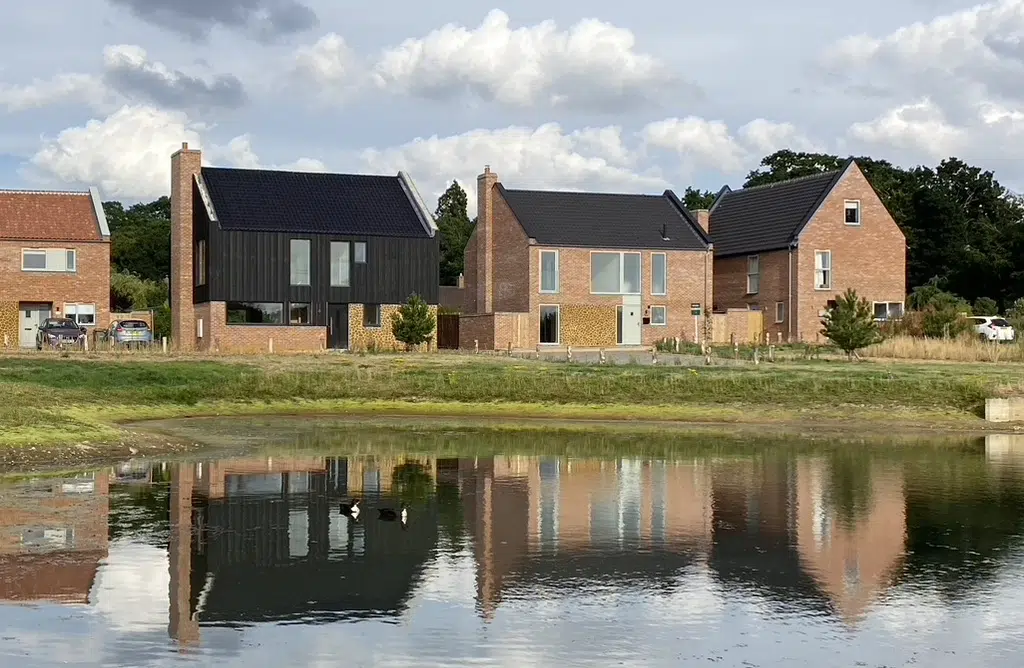
At The Green, a completed custom build scheme in Norfolk, LIVEDIN adopted a site-wide design code to frame the architecture for the 12 serviced self build plots
To simplify the process, most custom build sites use development-wide design codes and/or individual plot passports to set out what’s acceptable.
A sliding scale of involvement means that the more constrained the model, then the fewer design choices and opportunities to be hands on there are.
At the more restrictive end of the scale, a custom build developer (or even several companies) may already be contracted to build your home, which might also be predesigned – at least externally. But you can still customise elements such as internal layouts and finishes.
Check to see if you are tied in to any concept designs and whether there is a choice of pre-agreed house ‘types’ for the site, or if you have a more choice.
At the other end of the spectrum, you might simply buy the serviced custom build plot, from which point you commission the home yourself. So, effectively you are self building but on a multi-plot site.
There are also variations, such as custom build terraced houses or even apartments, where you buy the shell and complete the rest of the works with your own team. These remain the minority for now, however.
Benefits of Custom Build Homes
Custom build offers you choice and the opportunity to get a bespoke home more easily, on a plot that gives you more certainty in terms of viability and planning.
The trade-off is that you will be living on a street or even an estate, and you will have less control over the process than with a full self build. However, there’s usually a real sense of community from building next to like-minded people.
Furthermore, there’s usually a development-wide plan for the communal areas of a custom build development, such as playparks, landscaped zones and possibly even shared work spaces.
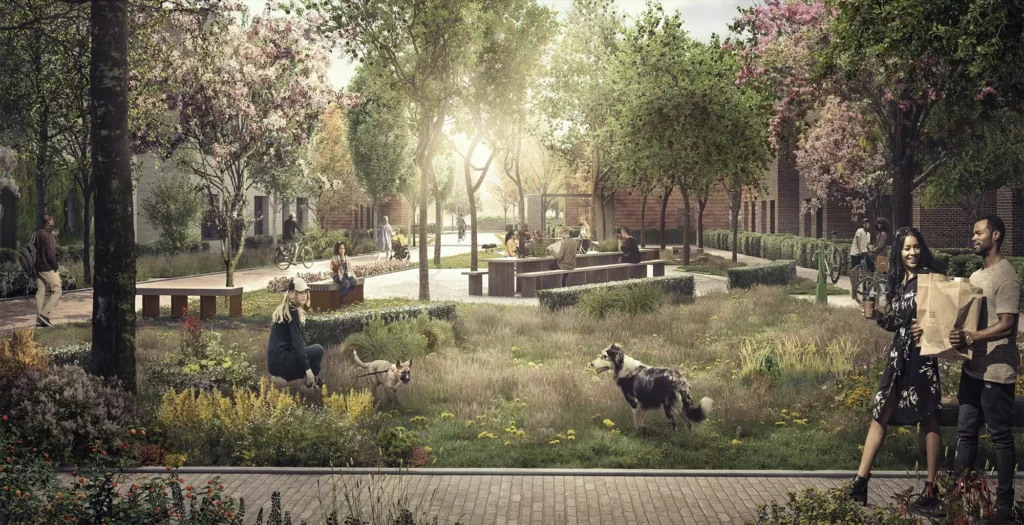
High-quality landscaping and community spaces form a core part of Steenvlinder’s vision for its serviced plot self build schemes, such as at Orchard Farm in Kent
On the biggest schemes this could even extend to the creation of schools, pubs and other facilities.
Equally, large scale developments may have smaller and more affordable plots, or a mix of opportunities, which gives more people the chance to achieve a customised home. This comes back to the original idea of scaling up self building.
Custom build’s real appeal to homebuyers is that planning is in place, utilities are on site and any infrastructure is taken care of. This de-risks the process for the buyer, as these processes can be costly, lengthy and stressful. So, you can start your project quickly and with confidence.
The certainty that custom build offers comes with the knowledge that you are working with a specialist provider, and so will benefit from their experience and commitment. Even where they are not building your house, they will still oversee the development as a whole.
Custom Build Routes
In general, on a custom build development the model used to deliver the serviced plot may involve:
- The freedom to commission your own home, working to a guide such as a design code.
- A pre-appointed house builder/package company that you work with, (or several that you choose from) for part/all of the build.
- A developer that offers a fixed design for you to customise internally, such as with layout options (not true custom build in many people’s eyes).
Where you are working with a developer or enabler, there are again different models, varying by site or by your choice. Typically, there will be handover at some point, after which the plot buyer takes control of delivering the rest of the project. Routes include:
- Golden brick plot: A developer (such as at Graven Hill) builds the foundations to golden brick for VAT efficiency, from which point you take over.
- Weathertight shell: A company builds the structure to the weatherproof stage for you to finish, usually referred to as shell. This might be handed over at a later phase of works, such as first or second fix, ready for you to commission the remaining trades.
- Self-finish: An individual design that’s built out and handed over for you to self-finish cosmetically.
- Turnkey: A full turnkey project, bespoke designed to your requirements and fully delivered by the company, ready for you to move into.
Consequently, you should enquire about the delivery options, to check that the routes on offer match your expectations.
If getting involved is important to you, look for sites where you commission a home from scratch on the plot, more like self building, but under the guide of the design code and/or plot passport.
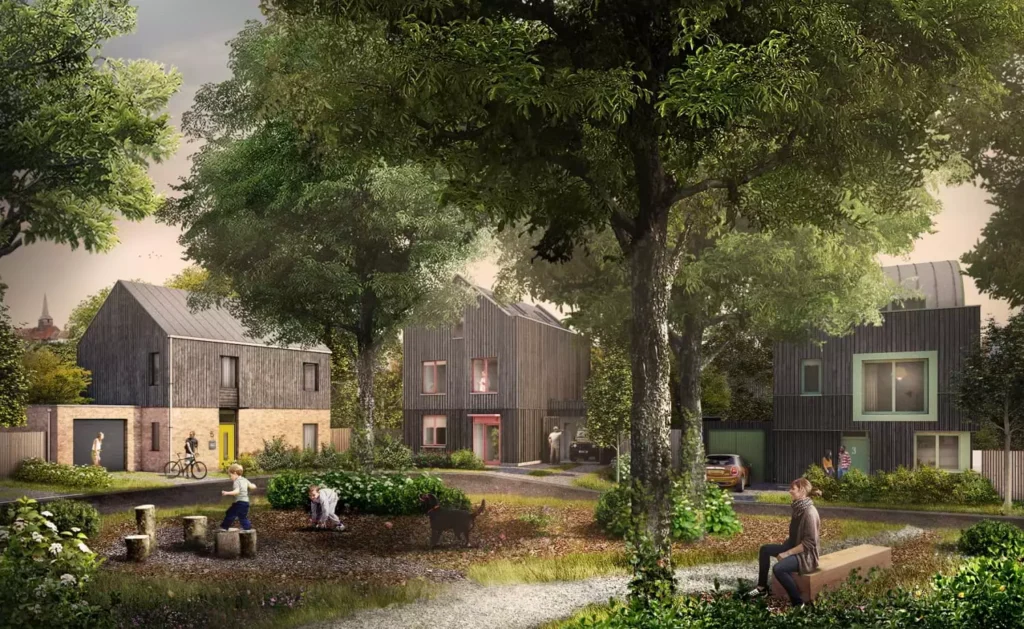
Unboxed Homes’ Pound Lane custom build in Essex has 12 plots, with three distinct house types designed by different architects that buyers can customise using the four-page plot passport
Typically, the enabling company will assist with ensuring your plans conform to the guidance, and you’ll then apply to the council for detailed planning permission.
Cohousing often uses a custom build model, for example, allowing the home builders to save money through self-finish using sweat equity, where individual owners or work groups complete the homes.
There are also a few developer-led sites where you can customise a home, but not sufficiently for it to meet the government definition of self and custom build.
CLOSER LOOKPlot Passports & Design Codes for Custom Build SitesDesign codes and plot passports are tools used to frame development to ensure that what is built will be acceptable in terms of planning. Your enabler will agree this with the council’s planners, taking into account local policy, the wider community and your future neighbours on the development. Not every site will have both, but most will have at least a design code, as this sets out what is permitted on a site-wide basis and ensures the finished development will read as a whole in its entirety. The design code might include fixing building volumes and heights, some positioning options on the plot and materials choices. In some cases, it might specify the external design(s) available or which house type is allowable on which plot. If used, plot passports work on a single plot basis, detailing what you can and can’t do. This might set out positioning options, locations for parking, maximum heights and perhaps materials. The plot passport will also include lots of technical details about your plot to support you in your custom build journey. So, a plot passport can be a key tool to help you decide whether a site is right for you or not. |
How are Custom Build & Self Build Different?
Because the upfront work of finding land and obtaining planning permission is taken care of, custom build is usually much quicker than self build.
Nevertheless, it is worth checking when the first building is expected to commence on site, as some only start once a fixed number of plots are sold.
Multi-plot sites will have some design limitations. However, this isn’t an issue for many people, as it is a trade-off in return for being able to proceed with certainty. Even on a self build, your local planning authority will frame what you are able to build, so it’s about finding an acceptable compromise for all parties.
However, unlike on a self build, you may be restricted to working with a pre-agreed contractor for the shell and possibly later phases. Knowing what route applies will help you decide if that development works for you.
Finding a Custom Build Plot
Not all dedicated plot search websites specifically tag sites as custom build, so be prepared to put in a bit of legwork when it comes to finding opportunities.
That said, Build It’s PlotBrowser website does allow you to look specifically for custom build schemes. ProtaHomes has created a new map of custom build sites, too, although as yet it is not fully populated. Alternatively, local papers often cover custom home developments in their property pages.
Another option is to seek out specialist custom build developers, like Steenvlinder and Custom Build Homes. Land promoters, such as Leaper Land, also list their own sites. Equally, package providers such as Border Oak, Oakwrights and Potton are practised in bringing on small multi-plot sites.
You can also visit NaCSBA’s directory of trusted custom build companies. Members sign up to a Code of Practice when joining NaCSBA.
Where a package manufacturer is bringing forward sites these will use its own products, built at least to house shell stage, so you won’t be free to commission your own contractor for the structure. This is the same where a local house builder is creating a plot, such as Stellco Homes.
Do Local Councils Support Custom Build?
All councils in England have an obligation to keep a list of people interested in self and custom building homes in their areas, under the Self and Custom Housebuilding Act. These lists are known as Right to Build Registers.
Councils must then grant planning permission for enough serviced plots to meet the demand identified on their Right to Build Registers.
That doesn’t mean they have to bring on custom build plots themselves, although some do, often on land they own – South Gloucestershire Council being a good example. So, always check your local council’s self build register pages for sites.
QUICK GUIDEWhat is the Right to Build?The Right to Build is the unofficial name for the legislation that requires councils in England to maintain a register of individuals and groups who are looking for land to create their own homes. Signing up to aregister does not mean the council will find you a plot, but it must have consideration for this demand when deciding planning applications. Many Scottish councils also run registers (although they are not obliged to act on them). It may seem like joining a Right to Build register provides little in return, but it does help more sites come forward locally. Perhaps more importantly, a lack of activity around custom and self build delivery by the council is starting to become a factor in planning decisions. This is leading to more approvals both in the initial application and at appeal. A number of councils impose restrictive tests and charges to join their registers; something the National Custom and Self Build Association (NaCSBA) is pushing to change. |
Many councils now have percentage policies for self and custom build. This where large sites, say 50- or 100-plus homes, are required to release a percentage (often 5%) for custom building. Teignbridge District Council was one of the first to deliver this kind of opportunity.
Check your local authority’s planning and development policies to see if they’re allocating plots in this way; but note that these sites will be part of a larger housing estate.
Unfortunately, not every council is embracing the Right to Build – with some putting up barriers such as exorbitant fees and overly prespective local connection tests to join their registers. These practices can disguise true demand for custom build plots.
What will my Custom Build Journey Look Like?
Your exact path to a custom build home will vary according to the type of opportunity and your unique design, but there are some common points.
Sites are often marketed before the plots are actually put on sale, so check if there is a ‘register your interest’ option on a development that you like. This will inform you about open days and plot release dates.
On most schemes, once the sites come to market, you can reserve a plot for a fee. There will then be a window for customisation, affordability checks and sometimes planning submission (if you’re changing the design) prior to plot purchase.
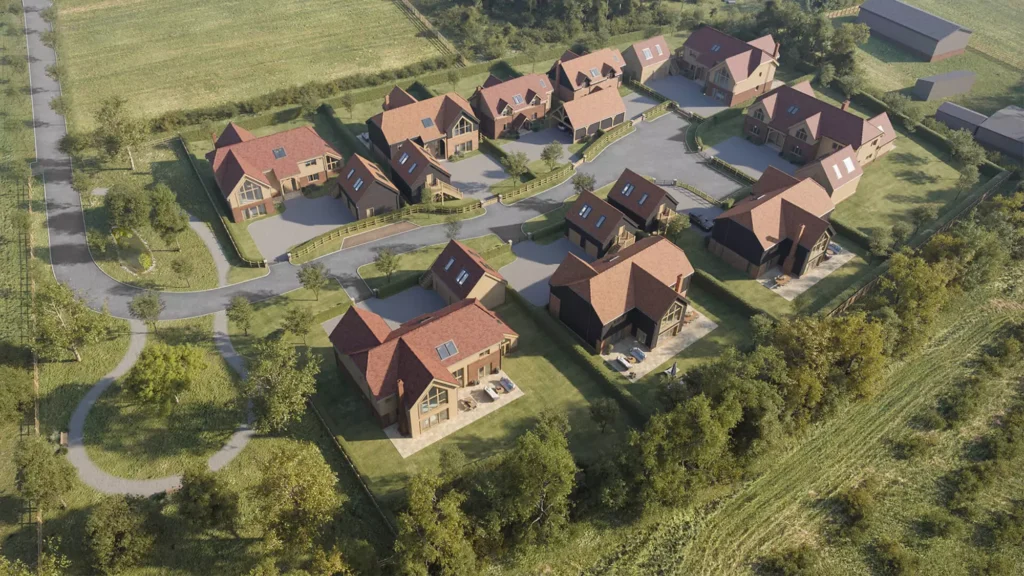
Callum Park in Kent is a custom build scheme by specialist provider Custom Build Homes. The golden brick plots come with pre-designed layouts with the freedom to customise the interiors, and homes are handed over as a painted and plastered house shell for you to commission the remaining trades
In some cases, you may need to secure detailed planning permission for your bespoke design. But if the scheme has a design code and/or plot passport, as long as your plans are within the parameters, it may not be necessary to apply for full planning.
Different custom build providers have different timeframes for these stages, so before you buy it’s always a good idea to check how quick the process should be and when work can commence on site.
You’ll typically buy the plot once the foundations are out of the ground (at golden brick level). From here, the rest of the work proceeding according to the custom build route you’ve selected, with on-site construction times comparable to a normal self build.
What Does a Custom Build Home Cost to Buy?
On a custom build project, the cost and effort of organising the infrastructure, planning permission etc are built into the plot price – so you get certainty over pricing and timescales at the heavy-lifting stage of getting a site build-ready.
Naturally, the enabling company will expect to make a profit on these elements. So, this route to an individual home may cost slightly more than a traditional self build where you control every aspect of the project, but the benefits are significant.
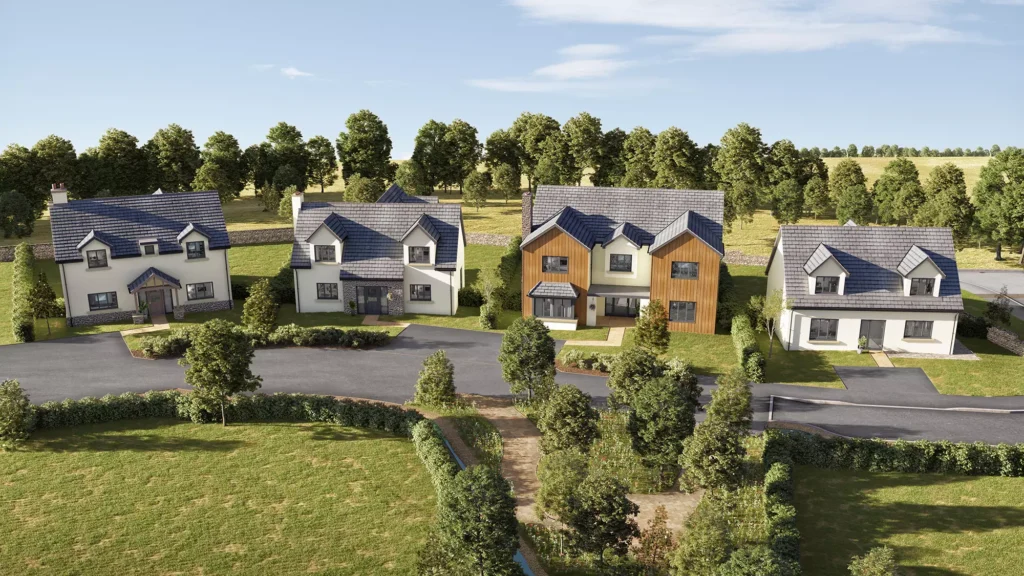
Hugr Homes is the enabler for the Wellbank custom build development on the edge of the Lake District national park. Phase 1 includes 18 plots, with timber frame superstructures provided by Fleming Homes. Plots start from £100,000, and there’s design flexibliity within the parameters of the design code
Your exact project costs will of course vary by site, as well as according to the size of plot and development, and the scale and quality of the individual house you plan to create.
For example, commissioning an oak frame home on a small development of large plots in the South of England will be far more expensive than building on a site of 50 plots in the North.
As a starting point, many custom build developers working at volume try to mirror some of the costs of similar homes locally – and it’s then up to you if you wish to change the spec.
So, while you might not save by money custom building, it will give you a tailor-made home that is built to a far higher quality than a comparable existing property in the area.

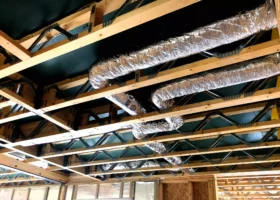































































































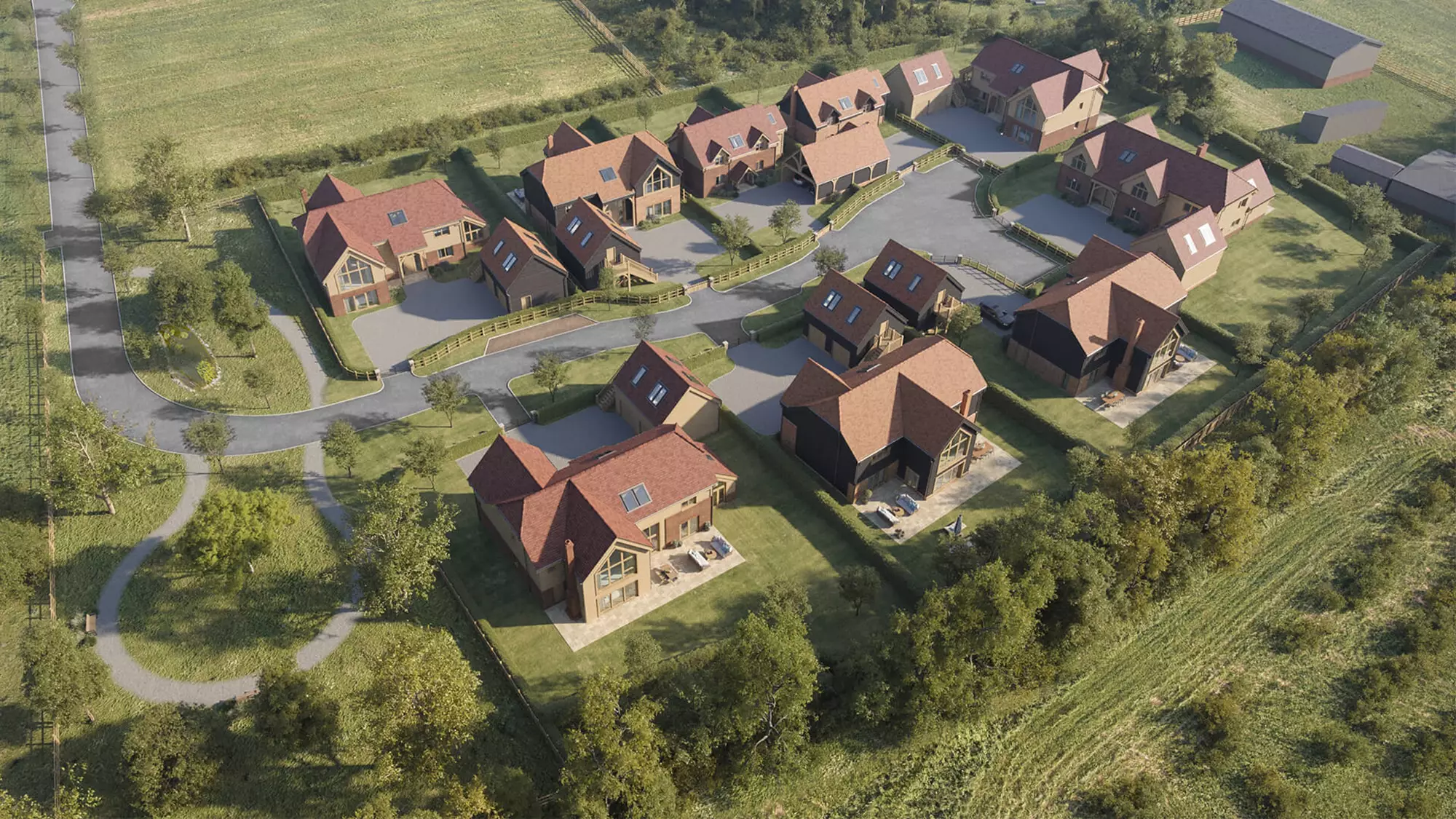
 Login/register to save Article for later
Login/register to save Article for later




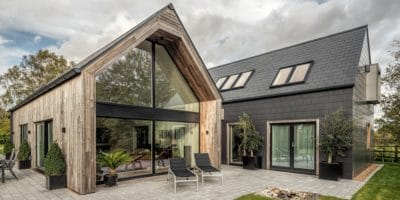
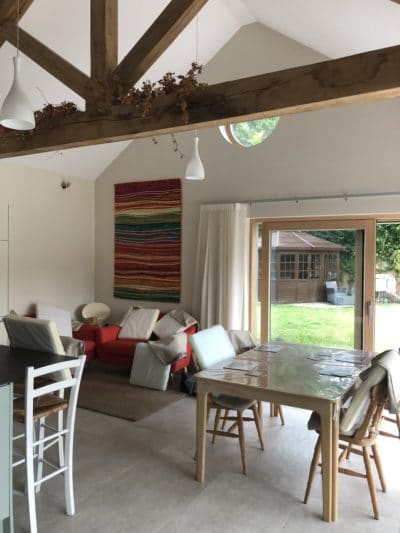
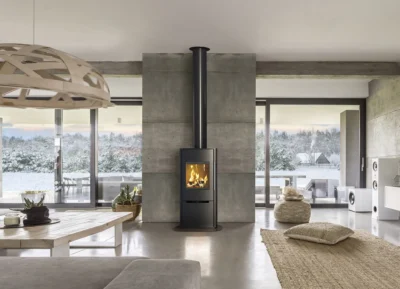
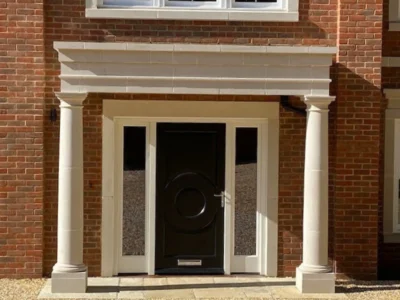





Comments are closed.